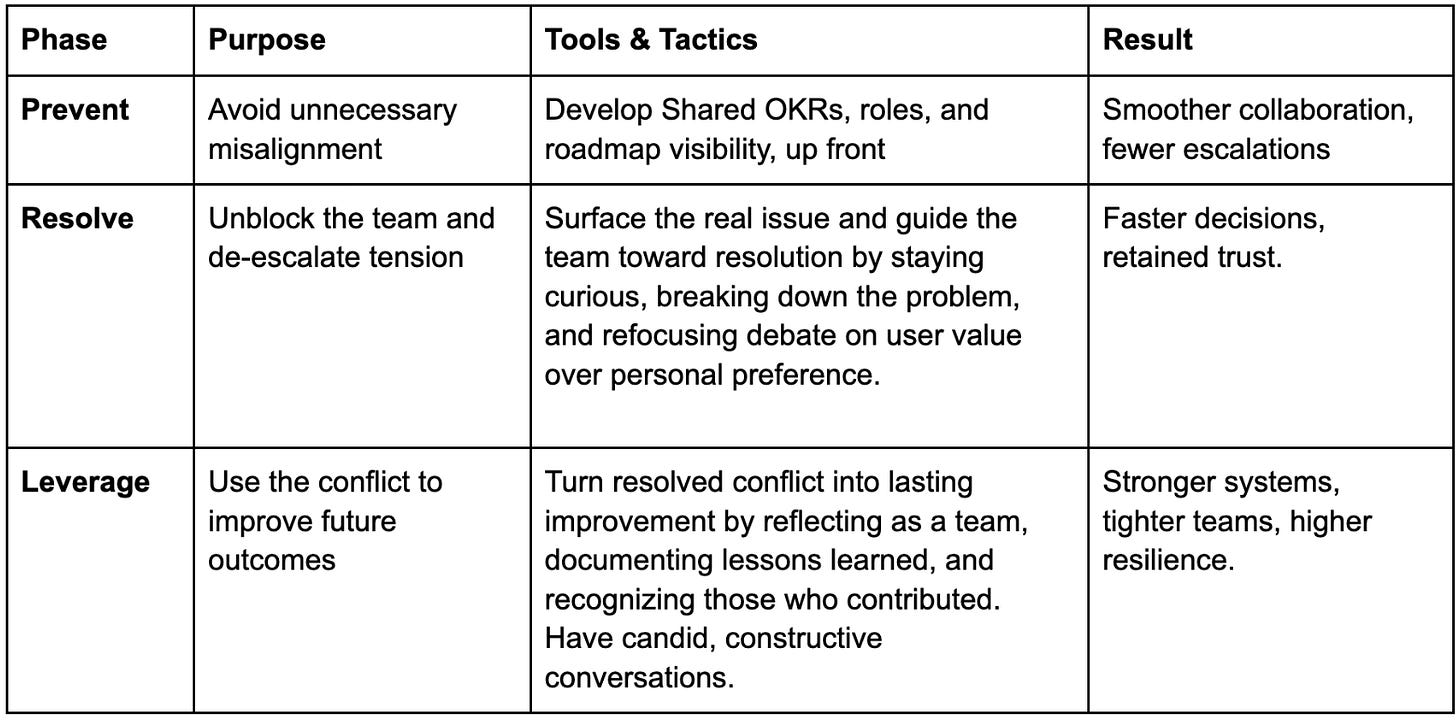Part 1: Why Conflict Isn’t a Bug, It’s the Job
Conflict is built into the DNA of product management. When handled well, it sharpens thinking, strengthens teams, and accelerates outcomes. When handled poorly, it leads to trust breakdowns, rework, missed launches and even attrition.
This three-part series is a guide to doing it well: practical tools, repeatable tactics, and mindset shifts you can use today.
Why Conflict Happens
As a PM, you’re moving fast, navigating ambiguity, and balancing competing incentives. Conflict isn’t a failure, it’s inevitable. And more often than not, it’s a signal.
In my experience, most product tension boils down to one of these seven triggers:
Misaligned incentives (e.g. Sales wants speed, Engineering wants scalability)
Unclear communication or decisions made without alignment
Fuzzy ownership over features or priorities
Disagreements on what matters most (new vs. existing users, short vs. long term)
Pressure from leadership or customers to ship fast
Ego and interpersonal history
Left unaddressed, these frictions escalate. But surfaced early and intentionally, they create space for smarter decisions and stronger relationships..
The Conflict Alignment Flywheel
Early in my career, I learned that the most effective PMs don’t just put out fires. They use conflict to make the product and the team stronger. That led me to this model:
Like a flywheel, each phase of conflict, prevention, resolution, and reflection, builds momentum for the next. When you prevent misalignment early, it makes resolving conflict smoother. When you resolve well, it builds trust and psychological safety. And when you reflect and learn, the next cycle starts at a stronger baseline. Over time, the team builds a rhythm and what once felt hard becomes second nature. Here’s a repeatable 3-phase model for working through tension:
In Part 2, we’ll dive into the practical frameworks I rely on most when tensions start to rise.



